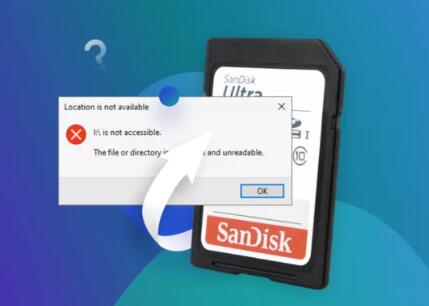Mini SD cards, though smaller in size compared to their standard and micro counterparts, are used in a variety of portable devices including older smartphones, digital cameras, and music players. Like any flash memory, mini SD cards are susceptible to corruption, which can cause data loss, inaccessibility, and device malfunctions. If you’ve encountered a corrupted mini SD card, don’t panic there are effective methods to fix the problem and possibly recover your important files.
What Causes Mini SD Card Corruption?
Corruption can occur due to multiple reasons, including:
Abrupt removal from devices
Power failures during data transfer
Malware or virus infections
File system corruption
Physical damage or manufacturing defects

Common Symptoms of Corruption
Device prompts to format the card
Files appear missing or inaccessible
The card shows incorrect size or unrecognized format
The card is not detected by any device
Initial Safety Steps
Before attempting fixes:
Stop Using the Card: Prevent further damage or overwriting.
Test in Another Device: Insert the mini SD card into a different device or reader.
Use an Adapter: Mini SD cards often need an adapter for standard card readers—ensure it’s functioning.
Create a Backup Image: If the card is still recognized, clone it using tools like dd (Linux/macOS) or Win32 Disk Imager (Windows).
Method 1: Use a Different Card Reader or Adapter
Try accessing your mini SD card with another reader. Sometimes the issue lies not with the card but with a faulty reader or port.
Method 2: Windows Error Checking Tool
Steps:
Connect your mini SD card to a PC.
Open “This PC,” right-click the card.
Select “Properties” → “Tools” tab → “Check.”
Follow prompts to repair the file system.
Method 3: Use CHKDSK Command in Windows
Open Command Prompt as Administrator.
Type chkdsk X: /f (replace X with the card’s drive letter).
Hit Enter. CHKDSK will scan and fix errors.
Method 4: Change or Assign a New Drive Letter
If the system detects the card but no drive letter is assigned:
Open Disk Management.
Right-click your mini SD card.
Choose “Change Drive Letter and Paths.”
Click “Add” or “Change” to assign a letter.
Method 5: Use Diskpart to Repartition and Format
Warning: This will erase all data.
Open Command Prompt.
Type diskpart → Enter.
Type list disk → Enter.
Select your mini SD card: select disk X.
Type clean → Enter.
Type create partition primary → Enter.
Type format fs=fat32 quick → Enter.
Method 6: Recovery Using Panda Assistant
Panda Assistant is a user-friendly tool designed for recovering files from corrupted storage. Simply:
Download and install Panda Assistant.
Launch the tool and select the mini SD card.
Run a scan to detect recoverable files.
Preview and save files to a safe location.
It supports a wide range of file types and is especially effective for camera and phone media.
Method 7: Try Linux for Better Access
Sometimes Linux systems can mount corrupted cards when Windows cannot:
Insert the card into a Linux system.
Open the file manager to check for access.
If visible, copy your files.
Use sudo fsck /dev/sdX (replace sdX with correct ID) for command-line repair.
Method 8: Check for Physical Damage
Signs include:
Warped or cracked casing
Bent pins
Water or heat exposure
If the card is physically damaged, avoid DIY repair and consult professionals.
Method 9: Contact Professional Recovery Services
Data recovery specialists can access and restore files even from severely damaged mini SD cards. This may be the only option if:
The card is not detected at all.
You’ve tried multiple recovery tools without success.
Preventing Future Mini SD Card Corruption
Adopt these best practices:
Always safely eject cards before removal.
Avoid overfilling the card.
Keep firmware and OS updated.
Scan cards regularly for malware.
Handle cards carefully to avoid physical damage.
Fixing a corrupted mini SD card doesn’t have to mean losing everything. Start with non-destructive repair methods such as checking on a different device, running CHKDSK, or using data recovery tools like Panda Assistant. If the card is completely unresponsive or physically damaged, professional help may be necessary. By following proper handling and usage practices, you can greatly reduce the risk of future corruption and ensure the longevity of your mini SD card.
About us and this blog
Panda Assistant is built on the latest data recovery algorithms, ensuring that no file is too damaged, too lost, or too corrupted to be recovered.
Request a free quote
We believe that data recovery shouldn’t be a daunting task. That’s why we’ve designed Panda Assistant to be as easy to use as it is powerful. With a few clicks, you can initiate a scan, preview recoverable files, and restore your data all within a matter of minutes.

 Try lt Free
Try lt Free Recovery success rate of up to
Recovery success rate of up to









